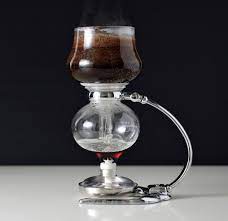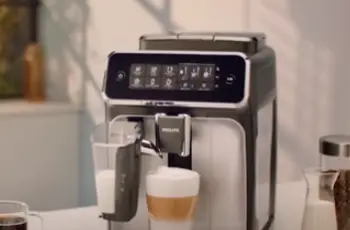Coffee is arguably one of the most well-known beverages on the planet. Why Coffee maker was invented and designed? Introduction of coffee maker was made to the world so that people are familiar its invention and designation. The espresso plant’s simmering espresso beans are used to make the drink. The approach for preparing espresso is based on the optimal flavor and personal preference.
In any event, almost all of the methods entail roasting espresso beans and then mixing them with hot water. The espresso machine, often known as a coffeemaker. It is one of the devices that can be used to blend espresso. The question arise Why was the coffee maker invented? It invented for the easy use for daily life.
A Coffee maker is an apparatus that commonly achieves the errand of blending the famous beverage created from ground cocoa beans. Made to work with or without power.
Coffee makers are assessable in a wide range of models. Some of them just blend espresso while others worked as multi-purpose brewers with numerous capacities.
History of Coffee Maker
The first coffee maker or the concept of coffee maker appeared in 575 A.D. that was the period when Turks started to brew coffee. For many years, making some espresso was a basic interaction. Cooked and ground espresso beans were set in a pot or container, to which heated water was added, The process is followed by the connection of a top to start the imbuement cycle.
Plans for Designing Coffee Maker
Pots were planned explicitly for preparing espresso, all to attempt to trap the coffee beans before the espresso is poured. Average plans include a pot with a level extended base to find sinking grounds and a sharp pour ramble that traps the skimming grinds. Different plans highlight a wide lump in the pot to get grounds when espresso is poured.
Implantation Measures
The invention of coffee maker was made for the implantation fermenting measures includes the following:
- Drenching the ground espresso beans,
- normally encased in a material sack,
- in steaming hot water
- and allowing it to soak or “implant” until the ideal strength brew was accomplished.
Working on Plan
By and by, all through hundreds of years, it was viewed as satisfactory to add ground espresso to heated water in a pot or dish, bubble it until it smelled right, and empty the mix into a cup. The main strategy for making espresso utilizing an espresso channel dribble blending and the plan had changed pretty much nothing.
The beginning of the espresso in a material sock at upper compartment into which water was poured, to deplete through openings in the lower part of the compartment into the espresso pot. Espresso was then administered from a spot on the pot.
The nature of the fermented espresso relied upon the size of the grounds too coarse. The espresso was powerless; too fine and the water would not trickle the channel.
Purpose of Invention
The purpose of invention of coffee maker was to simmer and ground espresso beans.
They were put in a pot or skillet, to which the warm boiling water was added and followed by the connection of a top to start the mixture interaction. Pots were planned for fermenting cocoa, all the attempt to trap the coffee beans before the espresso is poured.
Instant Coffee is dried to prepare espresso. They crush the espresso beans, mix the espresso and afterward eliminate the water. An espresso machine is utilized for blending espresso from ground espresso, not moment espresso. Moment espresso powder simply should be rehydrated, so adding high temp water is sufficient.
Types or Variety of Coffee Maker
1. Vacuum Coffee Maker
A vacuum espresso creator makes espresso by joining fume pressing factor and gravity in two chambers. Portion of Berlin conceived this style of espresso creator, which is otherwise called a vacuum pot or siphon espresso producer.
Vacuum espresso producers arrive in an assortment of plans and materials. The channel can be a glass bar or a screen made of metal, material, paper, or nylon, with the chamber being made of borosilicate glass, metal, or plastic.
The Napier Vacuum Machine, presented in 1840, was a pioneer in this field. While vacuum espresso machines were frequently convoluted for regular use. They were valued for producing a spotless blend and stayed famous until the mid-20th century.
2. Coffee Percolators
A coffee percolator is a kind of pot that is utilized to mix espresso. By gravity-cycling the bubbling or very bubbling blend through the grounds until the ideal strength is gotten.
Espresso percolators were beforehand famous; however in the mid-1970s, programmed dribble espresso creators had their spot. Percolators possibly open the grounds to higher temperatures than customary fermenting cycles, and they may recycle recently blended espresso through the beans. Therefore, percolator-prepared espresso is especially inclined to over-extraction.
With paper channels, non-pressure percolators can be utilized. Enormous percolators, now and again known as espresso urns. They utilize the time in workplaces, cafeterias, local area occasions and other critical gathering when a lot of espresso is needed without a moment’s delay.
3. Electric Drip Coffee Brewers
Quite possibly the most widely recognized the hands-off strategies for blending espresso at home is with a dribble espresso machine. Also called as programmed espresso creator. A dribble espresso creator will consistently be the most helpful gadget for fermenting multiple or two cups of espresso immediately.
4. Pour over Coffee Brewer
The pour-over coffee brewer utilizes a holding tank or heater pre-loaded up with water. At the point when the machine is turned on, the entirety of the water in the holding tank is brought to approach edge of boiling over. It also helps in utilizing a thermostatically-controlled warming component.
At the point when water is filled a top-mounted plate, it’s anything but a channel and cylinder which conveys the virus water to the lower part of the evaporator. The less-thick high temperature water in the evaporator is dislodged out of the tank into a cylinder prompting the splash head, where it’s anything but a blend container containing the ground espresso.
The pour-over, water relocation technique for coffee making will in general deliver blended espresso at a lot quicker rate than standard dribble plans.
5. Single Serve Coffee Maker
In recent years, one of the invention of coffee maker that is the single-serve or single-cup coffee makers grown in popularity.
Single-serve brewing systems allow a specific volume of water to be heated to a specific temperature to pass through a coffee portion pack. It results in a standardized cup of coffee being brewed into a recipient beneath the beverage outlet.
An airtight seal on a coffee portion pack ensures product freshness. It usually has an internal filter paper for optimal brewing results and contains a specific amount of ground coffee.
6. Espresso Maker
To make a rich, concentrated coffee, an espresso machine pumps pressured water through fine grounds. Espresso machines can be steam-powered, piston-powered, pump-powered, or air-powered.
Machines can be both manual and automatic. The espresso was considered best in the history of invention of coffee maker.
Features of Coffee Makers
The invention of coffee maker was made to provide following features;
- Strength settings for lighter or more grounded season brews
- Screens to prompt when upkeep like cleaning is required
- Removable ground compartments
- Programmable clock to naturally turn on or off at assigned occasions
- Temperature control for settings to change the force of warmth
- Steel network channel bushels that wipe out utilization of paper channels
- Serving settings for 1 to 10 cups which changes warming for less cups
- Implicit bean processor
- Warm carafes that keep drink hotter than glass compartments
- Water channels that fill in as filtration framework to sanitize the water
- Dribble interrupter switches for eliminating pot to pour espresso during fermenting cycle
- Removable water compartments rather than independent water holding tanks
Plan Contemplations in Coffee Maker
The influence of logical and innovative leap forwards as a theme in post bellum configuration. It was in the long run found in the creation and advertising of espresso and espresso making machines. Customer manuals stressed the gadget’s capacity to fulfill temperature and preparing time standards, just as the solvent component proportion among brew and grounds.
The mechanical physicist PETER SCHLUMBOHM communicated the logical theme most simply in his “CHEMEX” coffeemaker. It utilizes the authority of science as a business device from its underlying showcasing in the mid-1940s, portraying the item as “the Chemist’s method of making espresso,” and examining the nature of its item in lab language”
Later on, coffeemakers began to obtain more standardized structures. It than corresponded to a massive increase in the scale of creation required to meet post-bellum customer demand. During the 1970s, plastics and composite materials began to supersede metal, especially with the introduction of more modern electric dribbling coffeemakers.
During the 1990s, consumer demand for more appealing appliances to complement expensive modern kitchens. It results in a new flood of redesigned coffeemakers in a wider range of accessible tones and styles.
Bottom Line
After cautious deconstruction and examination of the Coffee Maker and every one of its parts, we can precisely say that a solid comprehension of the capacity and development of the item was accomplished.
A Coffee Maker has a straightforward capacity: it bubbles water and consolidates it with ground espresso beans to make an espresso refreshment.
The coffee maker was invented for the busy and rush life so that it is easy for people to have coffee in their busy schedule. This Coffee Maker contrasts from others from multiple points of view.
Initial, a reusable channel bushel was incorporated that replaces paper channels ordinarily/ That are used to strain the ground espresso or water combination. In addition it was added as a component into the foundation of the creator to adequately scatter heat produce by the warming curls that are additionally housed in the bond.



